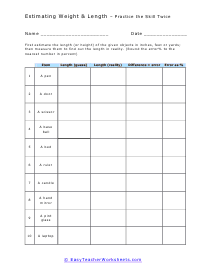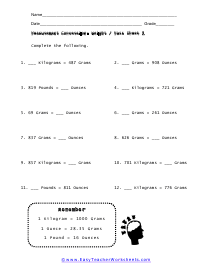What Are the Common Measures of Weight? Do you know what weight is? In very plain words, it is the amount of matter present in a body. Regardless of the shape and size of the object, as long as it contains some amount of matter in it, it will have mass too. Just like we use certain units to denote different values such as length, width, volume, and others, we need units for measuring weight as well. The system followed for using the appropriate unit for measuring mass, by most of the world, is known as the Metric System. According to the Metric System, the units used for the common measurement of weight are milligram, gram, and kilogram. The smallest unit for measuring this value is milligram. Objects with extraordinarily little mass are measured in milligrams. Milligram is abbreviated as mg. The unit next to milligram is gram. Grams are usually used for measuring objects such as baking sodas or cocoa powders. Gram is abbreviated as g. For the heaviest objects, the unit used is known as kilogram. Objects which have the largest amounts of masses are measured in kilograms. Kilogram is abbreviated as kg.
Many people often think that weight and mass are interchangeable words, but they are not. The weight of an object is based on the force exerted on it due to gravity. Mass is how much matter the object is made up of. Mass is not affected by gravity at all. If you were to travel in a rocket ship to the moon your weight would be sixteen and half percent of what it was on the moon. A two-hundred pound man would weigh thirty-three pounds on the moon. His mass will not have changed at all. He still made of the same amount of mass. This large collection of worksheets will help students begin to grasp the concept of mass/weight and the relative values of these objects. Students will also make simple mass focused calculations. Students will convert between units; estimate the proper units to use, and more.







































